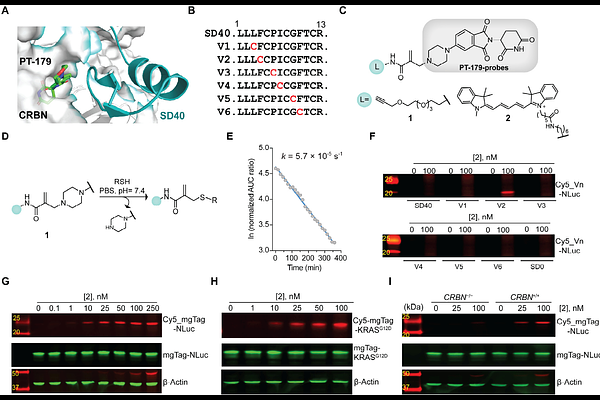Ultrasmall chemogenetic tags with group-transfer ligands

Ultrasmall chemogenetic tags with group-transfer ligands
Vedagopuram, S.; Sindi, S. H.; Chaudhary, S. K.; Pergu, R.; Singh, P.; Karaj, E.; Fung, J. E.; Deb, A.; DeCarlo, S. J.; Mercer, J. A. M.; Yamada, K.; Rodriguez, D.; Liu, D. R.; Choudhary, A.
AbstractChemogenetic tags are valuable tools for studying functions of a given protein-of-interest (POI) lacking small-molecule ligands, but most tags are too large for several POIs. Here, we report two ultrasmall chemogenetic tags (mgTag and cTag) of 36 and 50 amino acids (aa) that, to the best of our knowledge, are the smallest reported. These tags exhibit transferase-type reactivity with their ligands to append any moiety of interest to the tag. cTag utilizes an engineered C1 domain-bearing cysteine that undergoes group-transfer reaction with its ligand. Likewise, mgTag utilizes an engineered zinc-finger domain-bearing cysteine that undergoes group-transfer reaction with its molecular-glue ligand in the presence of cereblon (CRBN). We applied these tags in the context of cell signaling and proximity induction. While the fusion of HaloTag (297 aa) to the KRASG12D (188 aa) disrupted its ability to activate the growth-signaling pathway, fusion of mgTag or cTag did not. Group-transfer of BRD4 binder to tags appended to Abelson kinase (ABL) induced proximity between ABL and BRD4, resulting in the phosphorylation of the latter. Deletion of the transferase-type reactivity reduced phosphorylation levels, suggesting that proximity-inducing chimeras with group-transfer design may be more efficacious in certain scenarios. We envision these ultrasmall tags to have wide-ranging applications, including in basic science, biotechnology, and medicine.